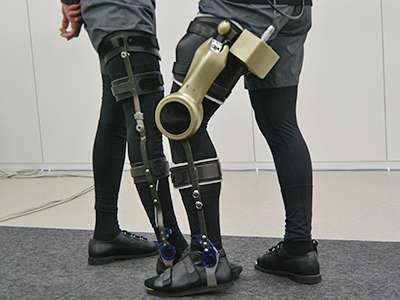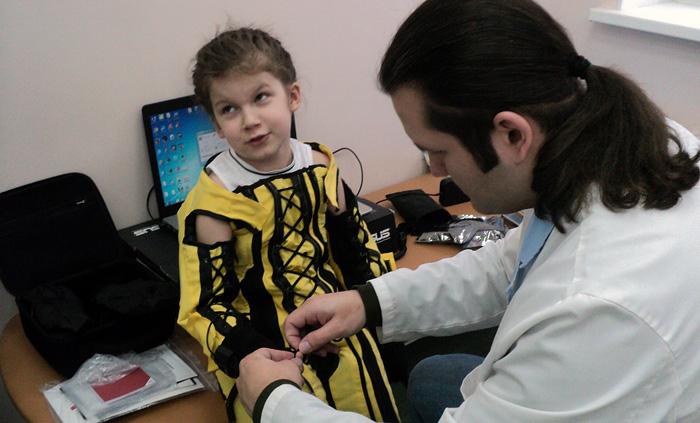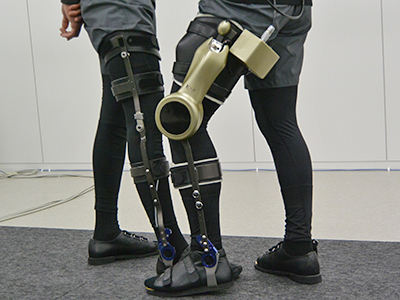Exoskeleton (robotic orthosis) for one leg helps walk patients with a knee injury
 A team of scientists from Japan developed a robotic orthosis to help people with a knee injury. Externally, the device nominates an exoskeleton for one leg - in essence, it is.
A team of scientists from Japan developed a robotic orthosis to help people with a knee injury. Externally, the device nominates an exoskeleton for one leg - in essence, it is.The device is called "Attached Robotic Unit Knee-Ankle-Foot Orthothesis". The device consists of a motor module and a sensor that is attached to an orthosis attached to the knee, lower leg and foot in order to help the patient move his foot during the walk. In the image on the left you see the prosthesis itself and its variation with the addition of a module developed by scientists.
Robotic devices to help people with spinal injuries and after a stroke have been around for a long time. As a rule, such medical gadgets are large ; it can be difficult for both doctors and patients to work with them. Now there is a demand for more simple, lightweight devices. For example, Russia is developing “Exosupport” with a sensor system and an integrated electrostimulator of the spinal cord and muscles for neurorehabilitation of children with motor and cognitive disorders. And in 2014, DARPA developed an exoskeleton without an iron heap — an exosuit, acting like real muscles, but intended to prevent injuries in healthy soldiers.

"ExoSupport" from scientists of Khanty-Mansiysk
')

Exotic suit DARPA
The Japanese development team studied the experience of creating medical devices for the rehabilitation of patients and applied it to solve a specific problem - knee injury. The module can be mounted on any orthosis of the appropriate type, to make a regular orthosis robotic gadget that helps walk. The device is suitable for use on any legs.
From 2016, the device will be tested for effectiveness and safety in hospitals and rehabilitation centers. At the same time, the team will work with the device software to train the device in various movements, including climbing and descending stairs, as well as working with various injuries - including the effects of a stroke, spinal injury, and cerebral palsy.


Source: https://habr.com/ru/post/391525/
All Articles